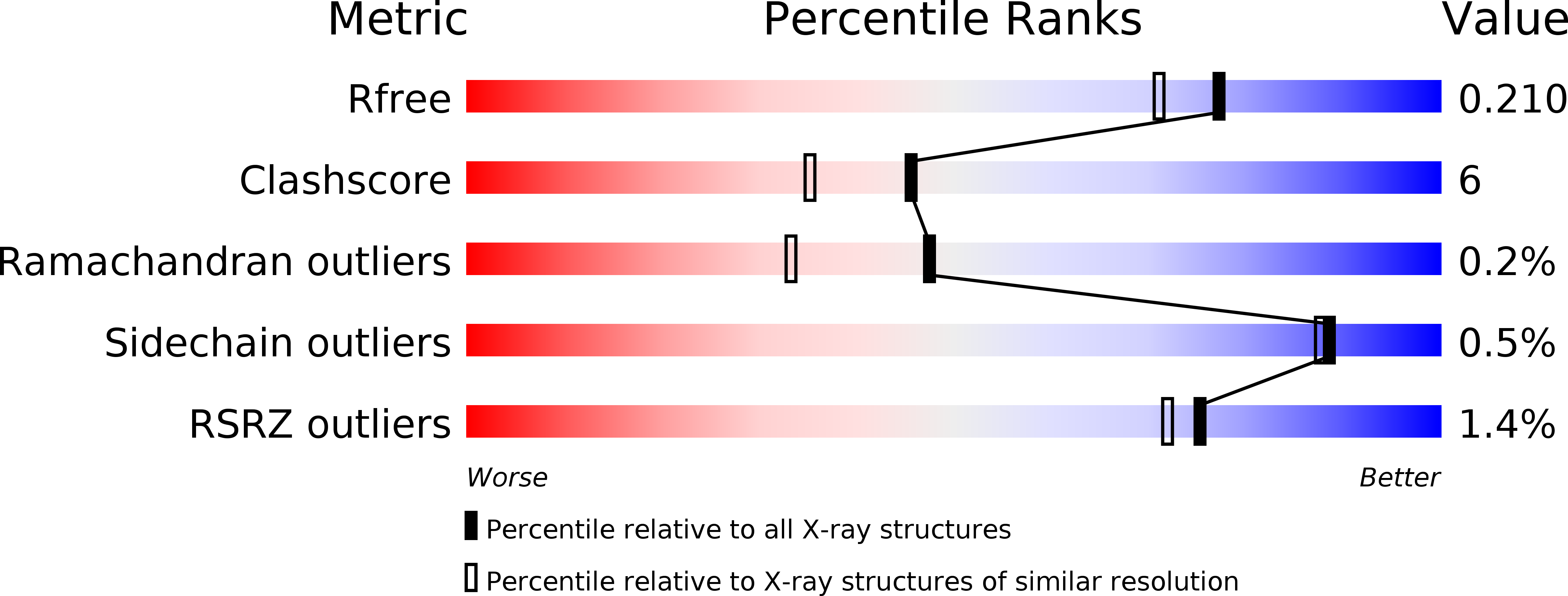Structural basis of the substrate subsite and the highly thermal stability of xylanase 10B from Thermotoga maritima MSB8
Ihsanawati, Kumasaka, T., Kaneko, T., Morokuma, C., Yatsunami, R., Sato, T., Nakamura, S., Tanaka, N.(2005) Proteins 61: 999-1009
- PubMed: 16247799
- DOI: https://doi.org/10.1002/prot.20700
- Primary Citation of Related Structures:
1VBR, 1VBU - PubMed Abstract:
The crystal structure of xylanase 10B from Thermotoga maritima MSB8 (TmxB), a hyperthermostable xylanase, has been solved in its native form and in complex with xylobiose or xylotriose at 1.8 A resolution. In order to gain insight into the substrate subsite and the molecular features for thermal stability, we compared TmxB with family 10 xylanase structures from nine microorganisms. As expected, TmxB folds into a (beta/alpha)8-barrel structure, which is common among the glycoside hydrolase family 10. The enzyme active site and the environment surrounding the xylooligosaccharide of TmxB are highly similar to those of family 10 xylanases. However, only two xylose moieties were found in its binding pocket from the TmxB-xylotriose complex structure. This finding suggests that TmxB could be a potential biocatalyst for the large-scale production of xylobiose. The result of structural analyses also indicated that TmxB possesses some additional features that account for its thermostability. In particular, clusters of aromatic residues together with a lack of exposed hydrophobic residues are characteristic of the TmxB structure. TmxB has also a significant number of ion pairs on the protein surface that are not found in other thermophilic family 10 xylanases.
Organizational Affiliation:
Department of Life Science, Tokyo Institute of Technology, Yokohama, Japan.

















